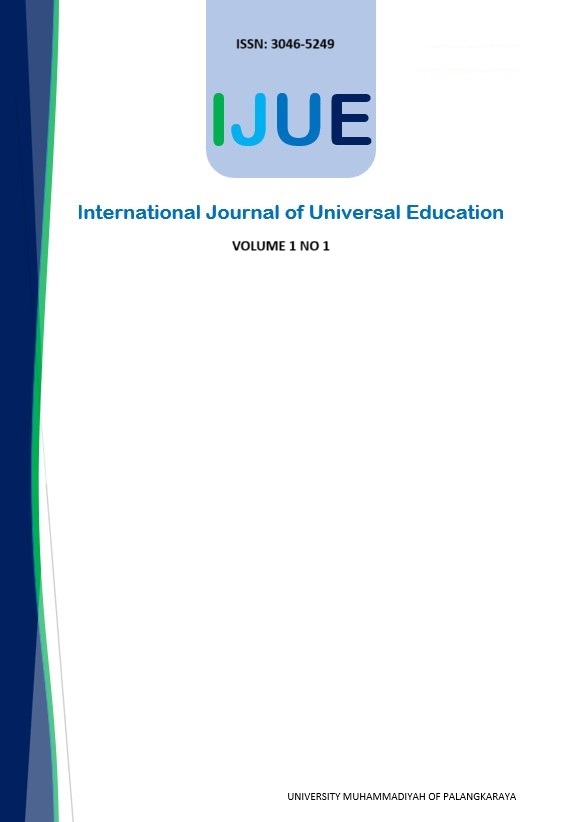Chaining and Prompting Technique of Behavior Modification to Improve Adaptive Skills in Child with Intellectual Disability
Main Article Content
Abstract
Children with intellectual disabilities experience difficulties in understanding academics, adapting to their environment, and taking care of themselves. The ability to take care of oneself, which is also called adaptive life skills, is a top priority in an effort to teach children to achieve independence in taking care of themselves. It is hoped that children will be able to take care of themselves until they are completely independent without the help of others. One of the adaptive life skills that need to be trained in students with a diagnosis of intellectual disability is wearing all the clothes they need for school, starting from buttoning their clothes, fastening the buttons on their trousers and skirts, tying their shoelaces, and wearing socks. This research aims to evaluate the effectiveness of the chaining technique in improving the ability to wear socks in a student with mild intellectual disability. This research was conducted on KN, a 12-year-old student diagnosed with mild intellectual disability who was not yet fully able to put on socks which made her was still helped by her mother every day. This research design used a single-subject experimental design with 8 intervention sessions using chaining and prompting-type behavior modification techniques. Analysis was carried out by comparing the ability to put on socks before and after the intervention. The research results showed that the chaining and prompting techniques were successful in improving the adaptive life skills of putting on socks in a child diagnosed with mild intellectual disability.
Downloads
Article Details

This work is licensed under a Creative Commons Attribution-ShareAlike 4.0 International License.
References
Akhmetzyanova, A. I. (2014). The development of self-care skills of children with severe mental retardation in the context lekoteka. World Applied Sciences Journal, 29 (6), 724-727.
American Psychiatric Association. (2013). DSM-V Diagnostic and Statistical Manual of Mental Disorder 5th Edition. Washington, DC: American Psychiatric Association.
Delphie, B. (2012). Pembelajaran anak tunagrahita: Suatu pengantar dalam pendidikan inklusi. Bandung: Refika Aditama.
Kauffman, J. M., Hallahan, D. P. & Pullen, P.C. (2017). Handbook of special education (2nd ed.). New York, NY: Routledge.
Kazdin, A.E. (2013). Behavior modification in applied settings (7th ed.). Illinois, IL: Waveland Press.
Lee, S. C., Muccio, B., & Osborne, N. L. (2009). The effect of chaining techniques on dressing skills of children with moderate mental retardation: A single-subject design study. Journal of Occupational Therapy, Schools, & Early Intervention, 2(3-4), 178–192. Doi:10.1080/19411240903392590.
Martin, G., & Pear, J.J. (2014). Behavior modification: What it is and how to do it (10th ed.). USA: Pearson Education, Inc.
Miltenberger, R.G. (2016). Behavior modification: Principles and procedures (6th ed.). Belmont, CA: Cengage Learning.
Purwanta, E. (2012). Modifikasi perilaku: Alternatif penanganan anak berkebutuhan khusus. Yogyakarta: Pustaka Pelajar.
Weichman, L. (2023, August 10). Dressing skills: Developmental steps for kids. [Website] https://nspt4kids.com/therapy/dressing-skills-developmental-steps-for-kids/
Wick-Nelson, R. & Israel, A.C. (2015). Abnormal child and adolescent psychology with dsm-5 updates (8th ed.). New York, NY: Routledge.

